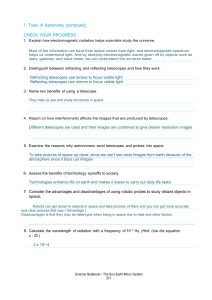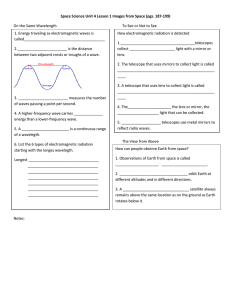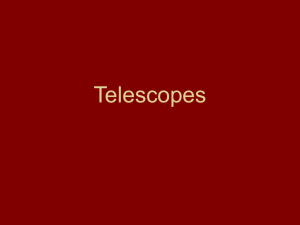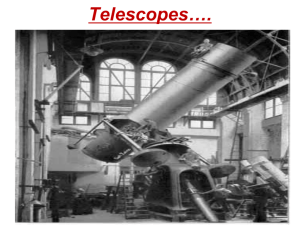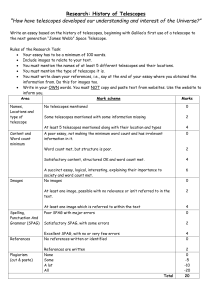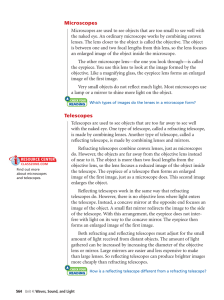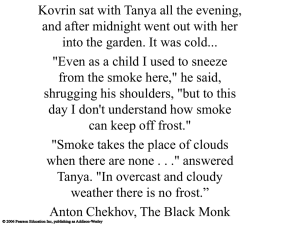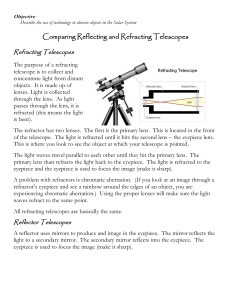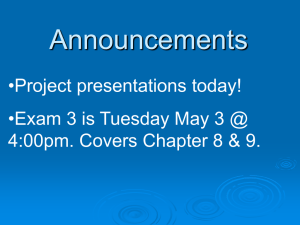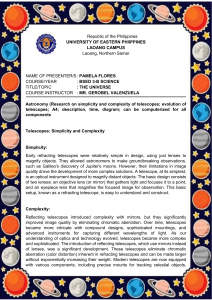Chapter5 Review
advertisement
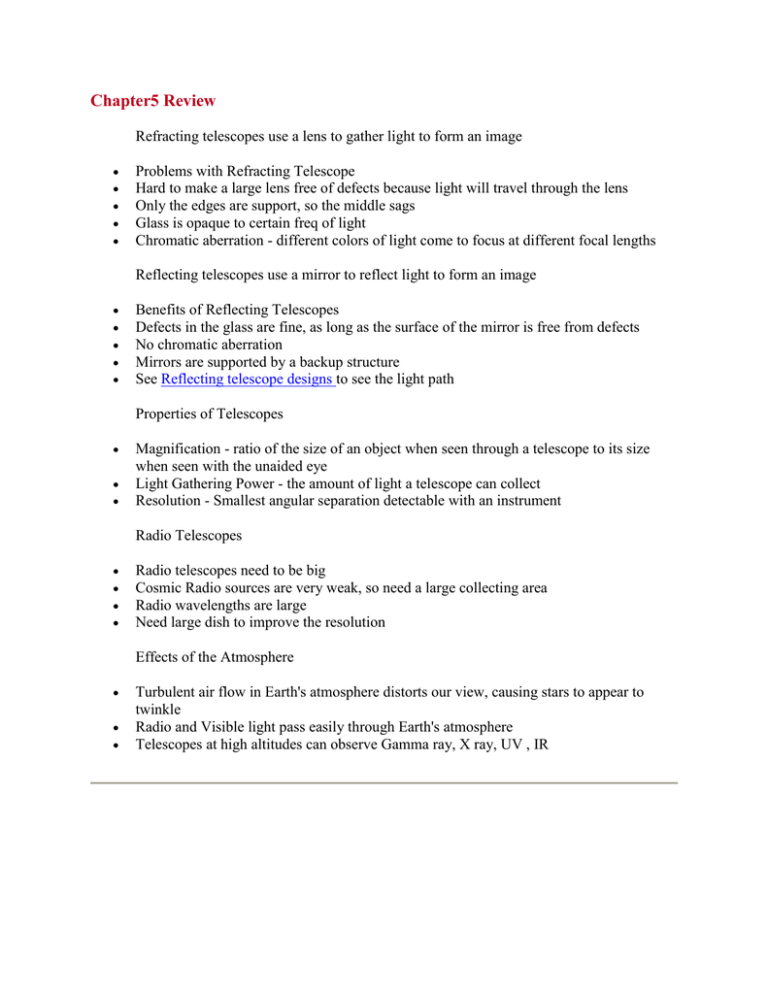
Chapter5 Review Refracting telescopes use a lens to gather light to form an image Problems with Refracting Telescope Hard to make a large lens free of defects because light will travel through the lens Only the edges are support, so the middle sags Glass is opaque to certain freq of light Chromatic aberration - different colors of light come to focus at different focal lengths Reflecting telescopes use a mirror to reflect light to form an image Benefits of Reflecting Telescopes Defects in the glass are fine, as long as the surface of the mirror is free from defects No chromatic aberration Mirrors are supported by a backup structure See Reflecting telescope designs to see the light path Properties of Telescopes Magnification - ratio of the size of an object when seen through a telescope to its size when seen with the unaided eye Light Gathering Power - the amount of light a telescope can collect Resolution - Smallest angular separation detectable with an instrument Radio Telescopes Radio telescopes need to be big Cosmic Radio sources are very weak, so need a large collecting area Radio wavelengths are large Need large dish to improve the resolution Effects of the Atmosphere Turbulent air flow in Earth's atmosphere distorts our view, causing stars to appear to twinkle Radio and Visible light pass easily through Earth's atmosphere Telescopes at high altitudes can observe Gamma ray, X ray, UV , IR
